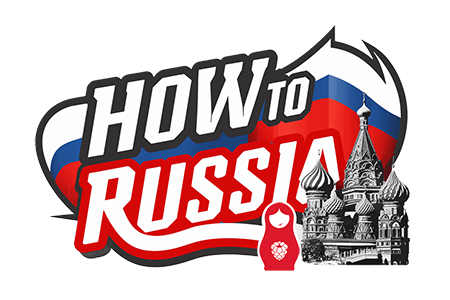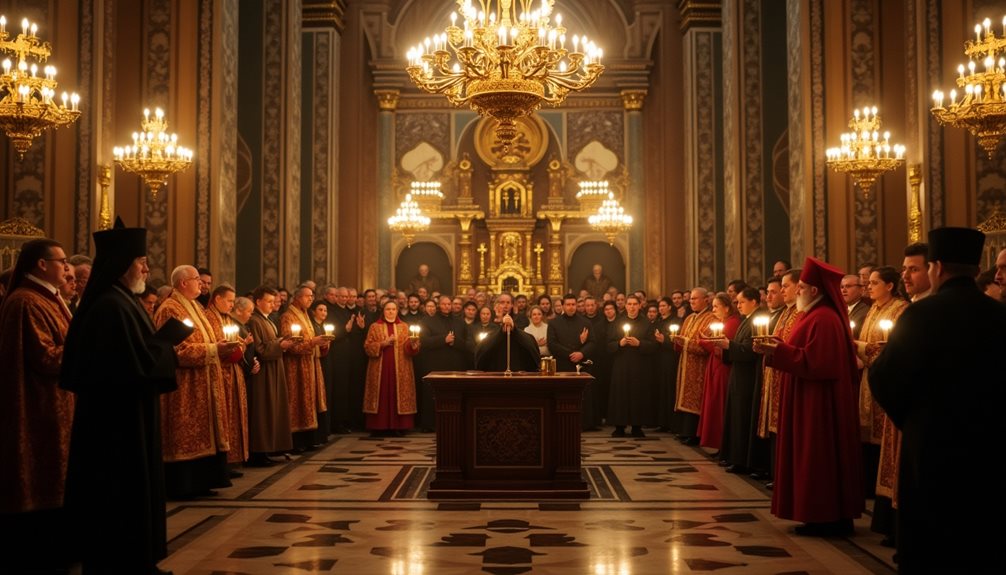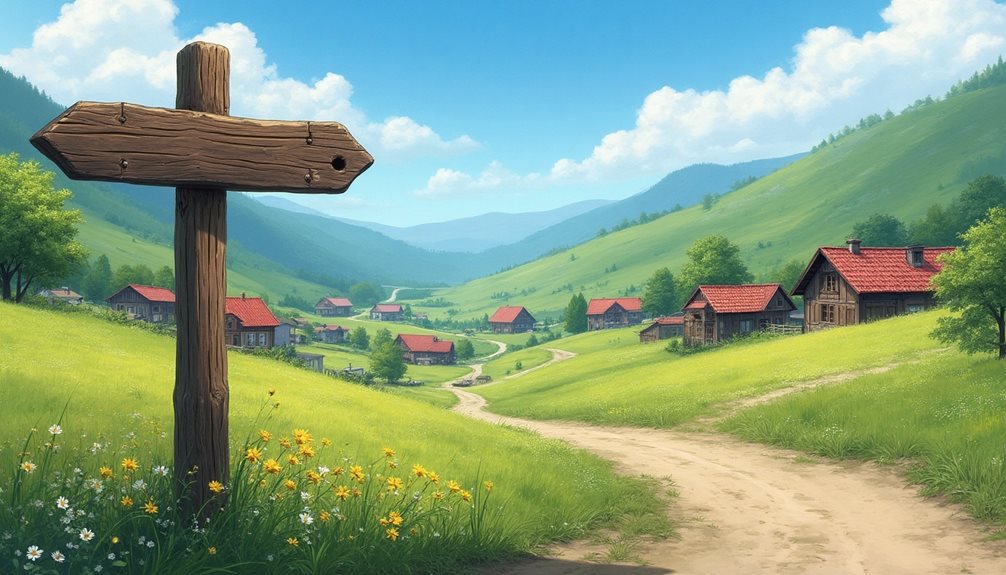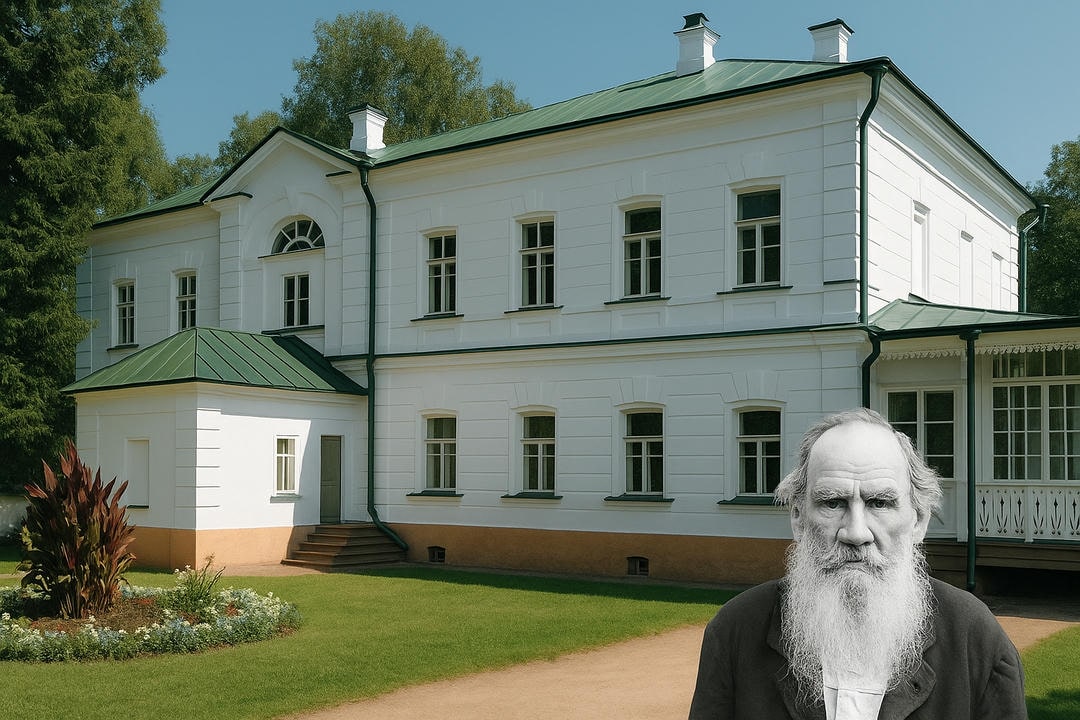Rostov-on-Don, often simply called Rostov, is a city that pulses with the energy of Russia’s south. Nestled along the riverbanks and serving as a gateway between Europe and Asia, it has long been a meeting point for traders, travelers, and dreamers. This bustling hub is famous for its cosmopolitan spirit, where more than a hundred nationalities have mingled for centuries, shaping a unique cultural mosaic.
At the heart of this dynamic landscape stand the Cossack women—iconic symbols of both the city’s past and its modern vitality. Known for their striking presence, they move through the streets with an unmistakable confidence, blending traditional values with contemporary flair. Their vivid dresses, carefully applied makeup, and signature high heels aren’t just fashion choices; they’re statements of identity and pride, shaped by generations of resilience.
Yet, there’s much more to these women than meets the eye. The Cossack heritage is woven from stories of courage, independence, and adaptability—a legacy forged on the wild steppes and refined in the city’s urban sprawl. Today’s Cossack women embody this duality: guardians of tradition, yet open to the world’s influences. To understand Rostov is to look beyond its lively facades and glimpse the deeper threads of history, culture, and feminine strength that run through its core.
As we explore Rostov, we’ll uncover how these southern sirens have shaped—and been shaped by—the city’s evolving identity, revealing a rich tapestry of customs, challenges, and triumphs that continue to define life along the Don.
![]()
The Enigmatic Charm of Rostov Cossack Women

Beneath the wide skies and rolling steppe of Rostov-on-Don, the legacy of the Cossacks is alive not only in folklore and history but also in the women who walk its sunlit streets. Rostov Cossack women possess a magnetic charm—an unmistakable blend of timeless tradition and striking individuality—that has become an emblem of the region’s identity.
Tradition Woven Into Daily Life
The roots of their appeal stretch back centuries. Cossack women were not passive figures in history; they played vital roles in community life, managing households, and sometimes even defending their homes alongside men. This spirit of participation and resilience continues today, visible in their confident gait and dignified presence.
One distinct feature is their attention to appearance. Even in the city’s summer heat, Rostov Cossack women are known for their carefully applied makeup, elegant hairstyles, and high heels. This is more than a fashion statement—it’s a form of self-respect and cultural pride, echoing the Cossack belief that outward presentation reflects inner strength.
Symbols of Heritage and Freedom
Traditional Cossack dress—colorful scarves, embroidered blouses, and layered skirts—still appears during festivals and family gatherings. These garments are not simply costumes but living links to ancestors, each pattern often carrying personal or family meaning.
Yet there is no rigidity: modern Cossack women effortlessly blend old and new. It’s common to see a young woman wearing a designer jacket over a blouse with traditional embroidery, or a grandmother passing down folk songs while scrolling through her smartphone. This interplay between heritage and freedom shapes their enigmatic allure.
Fascinating Insights
- Resilience: Historically, when Cossack men were away patrolling borders or fighting, women ran the villages. Many local legends celebrate their leadership.
- Beauty Rituals: Homemade masks with honey and herbs from nearby steppes are still popular. These recipes are cherished family secrets.
- Cultural Pride: The city hosts annual Cossack festivals where women compete in singing, dance, and even horseback riding—showcasing skills that have been valued for generations.
- Influence in Society: Today, many leading figures in education, government, and business in Rostov are Cossack women—testament to enduring respect for strong female leaders.
Living Icons of Rostov
More than just beautiful faces, Rostov’s Cossack women are keepers of tradition, symbols of fortitude, and ambassadors of their culture. Visitors often remark on the unique atmosphere they create: a mix of hospitality, wit, and self-assured charm. Whether dressed for a celebration or a routine day, they remain unmistakable—bold, free, and captivating under the southern Russian sky.
Their enigmatic charm is not just a matter of appearance; it is a living story of pride, adaptation, and enduring spirit woven through generations.
A Melting Pot of Nationalities and Cultures
Rostov-on-Don stands as one of Russia’s most diverse cities, where over a hundred nationalities have shaped its vibrant character. Set at the crossroads of Europe and Asia, this bustling southern metropolis has long attracted people from across Russia, the Caucasus, and beyond, creating a living mosaic of traditions.
A City Built on Diversity
The roots of Rostov’s multiculturalism reach back to its founding in the 18th century as a fortress and trading post. Merchants, artisans, and settlers of Armenian, Jewish, Greek, Tatar, Ukrainian, and many other backgrounds made their homes here. Their influence is still visible in the city’s neighborhoods, architecture, and daily life.
Walking through Rostov, you’ll hear a symphony of languages—Russian, Armenian, Georgian, Azerbaijani, and more—spoken in markets and along leafy boulevards. Religious diversity adds to the city’s tapestry: Orthodox churches stand beside synagogues, mosques, and Catholic chapels.
Cultural Fusion in Daily Life
This blend of backgrounds results in a city where traditions not only coexist but mix and evolve. Festivals from different cultures are celebrated throughout the year, often drawing crowds from every community. It’s common to see people of various origins coming together for holiday feasts or public concerts.
Culinary culture is perhaps where this fusion is most deliciously apparent. Rostov’s markets and restaurants offer a feast for the senses:
- Armenian lavash and khorovats grilled over open flames
- Greek moussaka and baklava
- Jewish pastries and Tatar pilaf
- Russian borscht with a local southern twist
Each dish tells a story of migration, adaptation, and shared celebration.
Interesting Facts
- The Central Market (Stariy Bazar) is one of Russia’s oldest markets and a symbol of the city’s multicultural trade traditions.
- Armenian Quarter: Rostov’s Armenian community is one of the largest in Russia, with its own schools, churches, and cultural centers.
- Shared Holidays: Rostov celebrates both Russian Orthodox Easter and Novruz (Persian New Year), reflecting an openness to many faiths.
- Music and Art: The city hosts international jazz festivals, Greek dance ensembles, and Cossack choirs—each enriching the local arts scene.
A Spirit of Openness
What truly distinguishes Rostov-on-Don is the sense of hospitality and acceptance that runs through daily life. Locals often pride themselves on their city’s “open gates”—a reference to its history as a hub for newcomers seeking opportunity or refuge.
Visitors are welcomed into this dynamic environment, experiencing not just a collection of customs but a thriving community that values connection across cultures. In Rostov, diversity is not only respected—it’s celebrated as a source of resilience and creativity.
The city’s melting pot spirit offers an invitation: to explore, to taste, to listen, and above all, to connect beyond borders.
Architectural Gems Reflecting Rostov’s Heritage
Rostov-on-Don’s skyline is a fascinating tapestry where history and innovation meet. The city’s streets are lined with architectural treasures, each telling a chapter of Rostov’s diverse story and reflecting the waves of people and ideas that have shaped its identity.
A City Shaped by Many Hands
Rostov’s architecture is as multicultural as its people. Early buildings reveal influences from Armenian, Greek, Jewish, and Russian communities, each group leaving a mark on the city’s urban fabric.
Key Landmarks and Styles
- Armenian Surb Hach Church: This beautiful church, built in the late 18th century, is one of the oldest in the city. Its elegant silhouette and peaceful courtyards are reminders of the deep roots and cultural contributions of Rostov’s Armenian community.
- Constructivist Gorki Theater: A striking example of Soviet-era architecture, the Gorki Theater is famous for its bold design, resembling a tractor—a symbol of industrial progress. Its sleek lines and polished stone façade make it a landmark of Russian constructivism and modernist ambition.
- Merchant Mansions and Trading Arcades: In the city center, ornate mansions and bustling arcades from the late 19th and early 20th centuries stand as memories of Rostov’s golden age as a trading powerhouse. These buildings often feature intricate facades blending Russian classicism with Mediterranean motifs.
- Synagogues and Mosques: The Great Choral Synagogue and various mosques highlight the religious diversity that has enriched Rostov’s architectural palette.
From Tradition to Modernity
Rostov’s evolving skyline mirrors its journey from a frontier town to a cosmopolitan hub. New developments—sleek high-rises and avant-garde commercial buildings—stand side by side with lovingly preserved historic structures. This coexistence is not accidental; it reflects a city that honors its past while embracing change.
Interesting Facts
- Restoration Efforts: Many historic buildings damaged during World War II have been carefully restored, preserving original details wherever possible.
- Green Boulevards: The city is known for its leafy streets lined with pre-revolutionary buildings, giving parts of Rostov a unique southern charm.
- Hidden Courtyards: Behind grand facades, you’ll often find inner courtyards—a hallmark of 19th-century Rostov architecture—where neighbors gather and local life unfolds.
Exploring Rostov’s Spirit
To walk through Rostov-on-Don is to travel through time. The merging of stately churches, bold avant-garde theaters, bustling markets, and quiet residential lanes creates an atmosphere where tradition and modernity don’t just coexist—they enhance one another.
These architectural gems invite visitors to look closely and discover the layers of history embedded in every street corner. In doing so, they reveal a city proud of its heritage yet always looking forward—an authentic reflection of southern Russia’s cultural mosaic.
Mysteries and Legends of Zeleny Ostrov
Zeleny Ostrov—Green Island—lies within the city limits of Rostov-on-Don, nestled in the embrace of the Don River. This picturesque island, covered in dense greenery and cherry orchards, has inspired generations of locals with stories that blur the line between reality and legend.
A Place Cloaked in Folklore
For centuries, Zeleny Ostrov has been a source of fascination for Rostovites. Local fishermen and families picnicking on its shores often share tales passed down through the years, adding to the island’s mysterious atmosphere.
Cherry Trees and Strange Powers
Perhaps the most enduring legends revolve around the dense cherry orchards that cover much of the island. According to folklore, these trees are more than just a source of sweet fruit—they possess peculiar powers. Some stories warn that eating cherries from Zeleny Ostrov can lead to sudden illness or strange dreams, especially if picked at dusk or during certain phases of the moon. Others say the cherries were planted by ancient settlers as protection against evil spirits, and that their roots run deeper than anyone suspects.
Otherworldly Encounters
- Enigmatic Lights: There are reports of ghostly lights flickering among the trees at night, said to be the souls of lost travelers or ancient guardians of the island.
- Whispering Winds: On quiet days, visitors claim to hear faint whispers in the breeze—believed to be voices of island spirits or echoes from centuries past.
- Forbidden Waters: Some myths caution against swimming near certain parts of the island, citing tales of inexplicable currents or sudden chills in the water linked to old river deities.
A Living Symbol of Rostov’s Cultural Mosaic
The mysteries of Zeleny Ostrov do more than entertain—they reflect Rostov’s rich blend of cultures and its deep relationship with nature. The island stands as a living reminder that even amid modern life, there is room for wonder and reverence for forces beyond human understanding.
Why Locals and Visitors Are Drawn Here
- Nature and Escape: The island offers a peaceful retreat from city life, with wild landscapes perfect for exploration.
- Tradition: Many families maintain rituals tied to Zeleny Ostrov—such as gathering cherries for festivals or telling ghost stories by campfire.
- Enduring Allure: Whether you come seeking quiet beauty or hoping to glimpse something inexplicable, Green Island promises an experience that lingers long after you leave.
Zeleny Ostrov invites everyone to look deeper—beyond the surface of its shaded trails and rippling waters—into a world where myth and reality entwine, keeping the spirit of discovery alive in Rostov-on-Don.
Vibrant Streets and Festive Celebrations in Rostov-on-Don
Bustling avenues like Voroshilov and Budennovsky are the lifeblood of Rostov-on-Don, where the city’s dynamic spirit is on display day and night. These central streets are lined with a colorful mix of cafes, high-end restaurants, cozy bakeries, and modern shopping centers. Travelers can sample authentic Don cuisine—like spicy fish soup (ukha) or traditional pirozhki—while soaking up the city’s lively rhythm.
Street Life: Energy and Entertainment
On any given day, the sidewalks become open stages for talented street performers. Musicians play everything from jazz and Russian folk to modern pop. Acrobats, living statues, and painters add to the creative atmosphere, making every stroll along these avenues an unexpected adventure.
Interesting Fact:
Rostov-on-Don is known as the “Gateway to the Caucasus” and its streets reflect this multicultural identity. It’s common to hear several languages and dialects in just one city block.
Festivals: A Mosaic of Cultures
Rostov hosts a rich calendar of events that draw crowds from across the region. One of the highlights is Sabantuy, a festival with roots in Turkic culture that celebrates the end of spring planting. During Sabantuy, the city’s parks and streets fill with music, traditional dances, sporting competitions (such as wrestling and sack racing), and delicious ethnic foods.
Additionally, over 100 nationalities call Rostov home, making its festivals uniquely diverse. Events often include performances by Armenian, Jewish, Tatar, Ukrainian, and Greek communities, reflecting centuries of peaceful coexistence.
Community Spirit: Where Tradition Meets Modernity
These celebrations are more than just entertainment—they foster a genuine sense of unity. Both locals and visitors are invited to join in folk dances, try hands-on crafts, or take part in open-air concerts. The blend of old-world customs with contemporary flair gives each gathering a special flavor that’s distinctly Rostov.
Insider Tip:
Many local festivals coincide with open-air art markets and food fairs. It’s a great opportunity to pick up handmade souvenirs or try classic Don wines and cheeses.
Why Tourists Love It
Travelers consistently praise Rostov-on-Don for its welcoming atmosphere. Whether wandering beneath the neon glow of Budennovsky at night or joining a spontaneous street dance during a festival, visitors find themselves swept up in the city’s infectious enthusiasm. In Rostov-on-Don, every street corner tells a story—and every celebration is an invitation to experience the city’s unique blend of tradition, diversity, and modern excitement.
![]()
Rostov’s Lasting Allure: Where Tradition and Modern Life Meet
Rostov-on-Don is more than a destination—it’s an invitation to experience the vibrant soul of southern Russia. In its bustling streets, fragrant markets, and sun-dappled riverbanks, the city’s spirit is palpable: proud, open-hearted, and endlessly creative. The Cossack women of Rostov stand as living testaments to this legacy, blending strength and grace, tradition and progress.
From the mysteries of Zeleny Ostrov to the city’s kaleidoscopic festivals and multicultural feasts, every moment here is a reminder that Rostov’s story is always evolving—written by all who call it home. Whether you come for the history, the food, or the legendary hospitality, one thing is certain: Rostov-on-Don stays with you long after you leave, echoing with laughter, music, and the promise of discovery.




